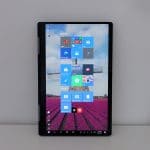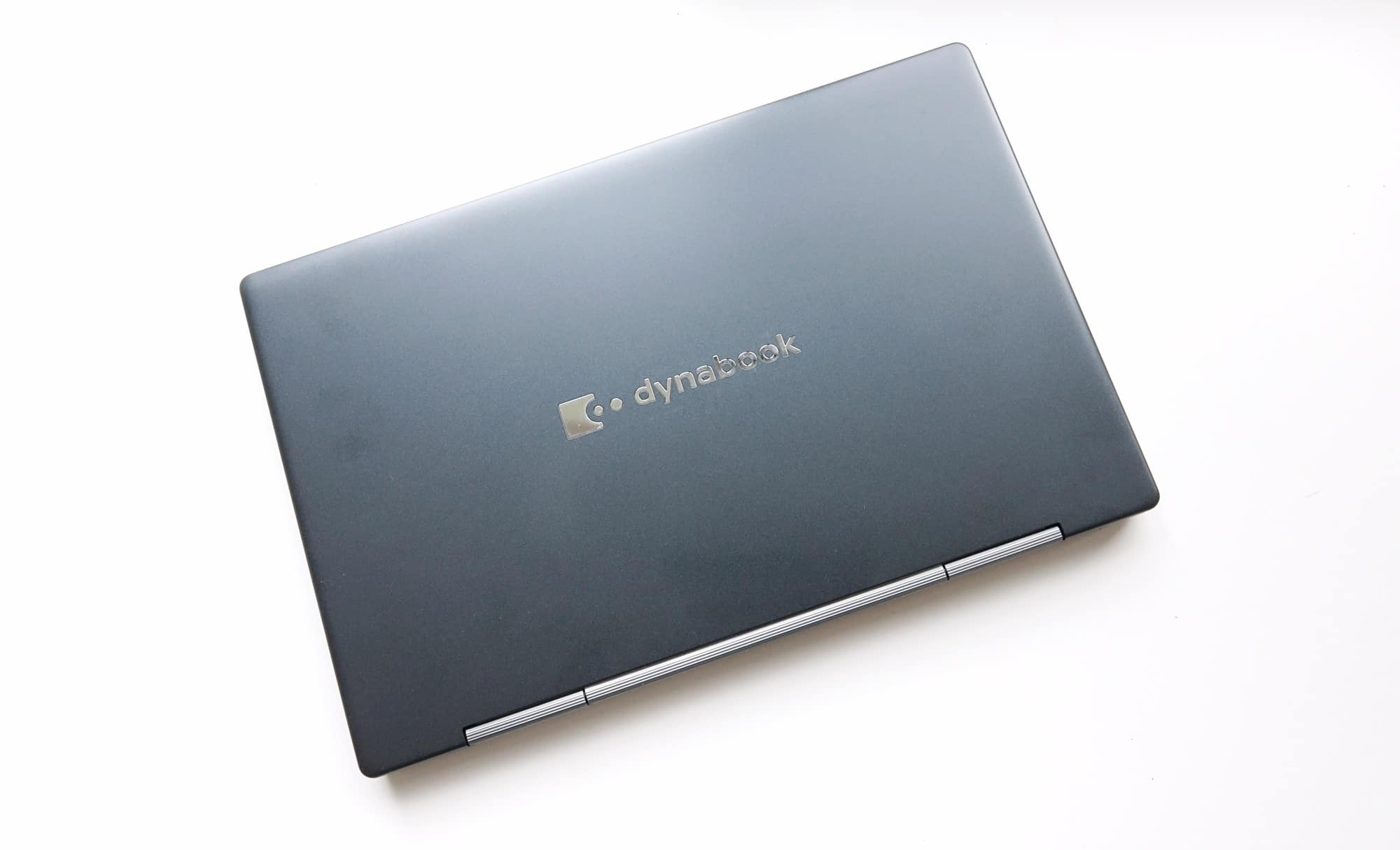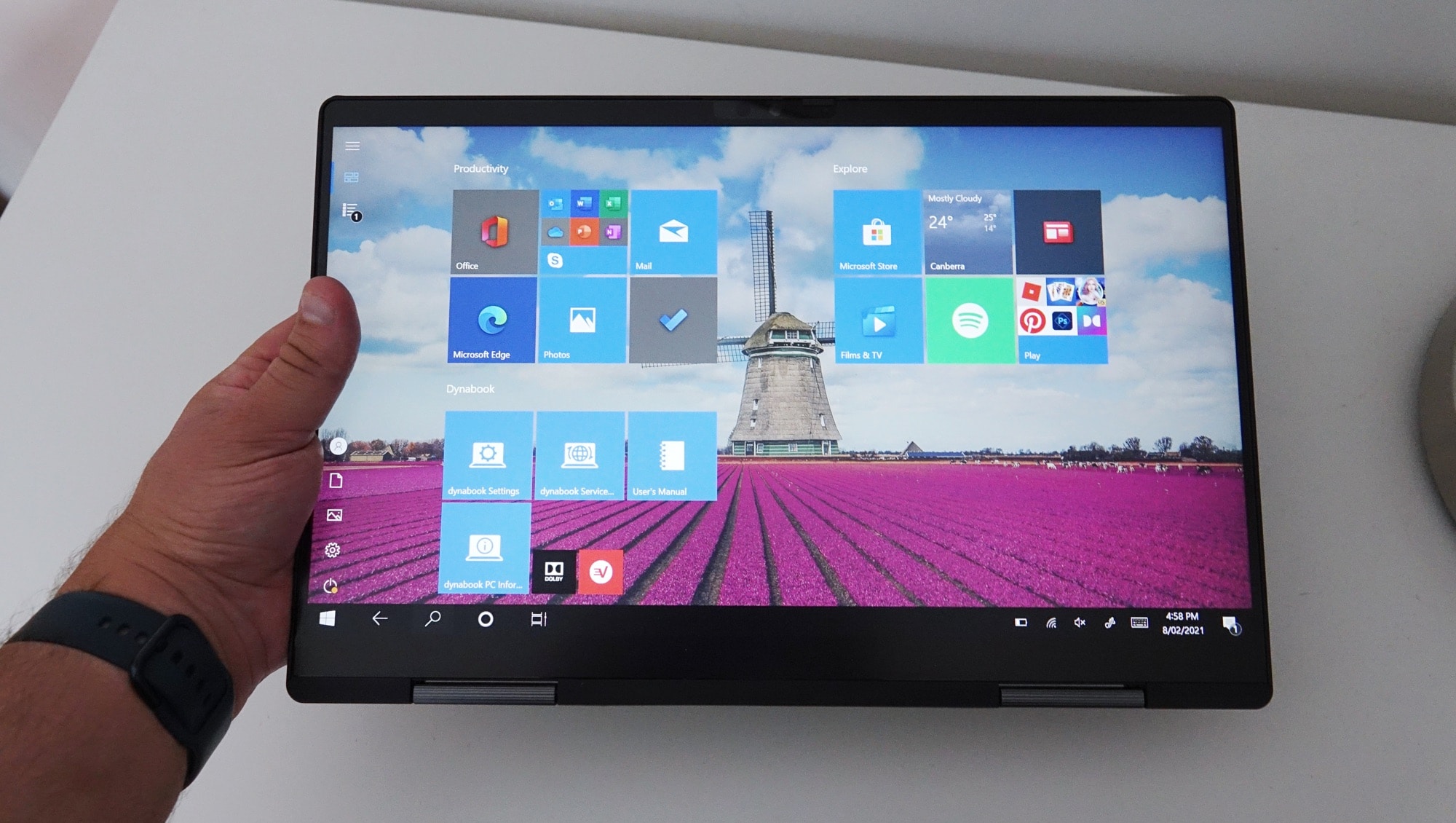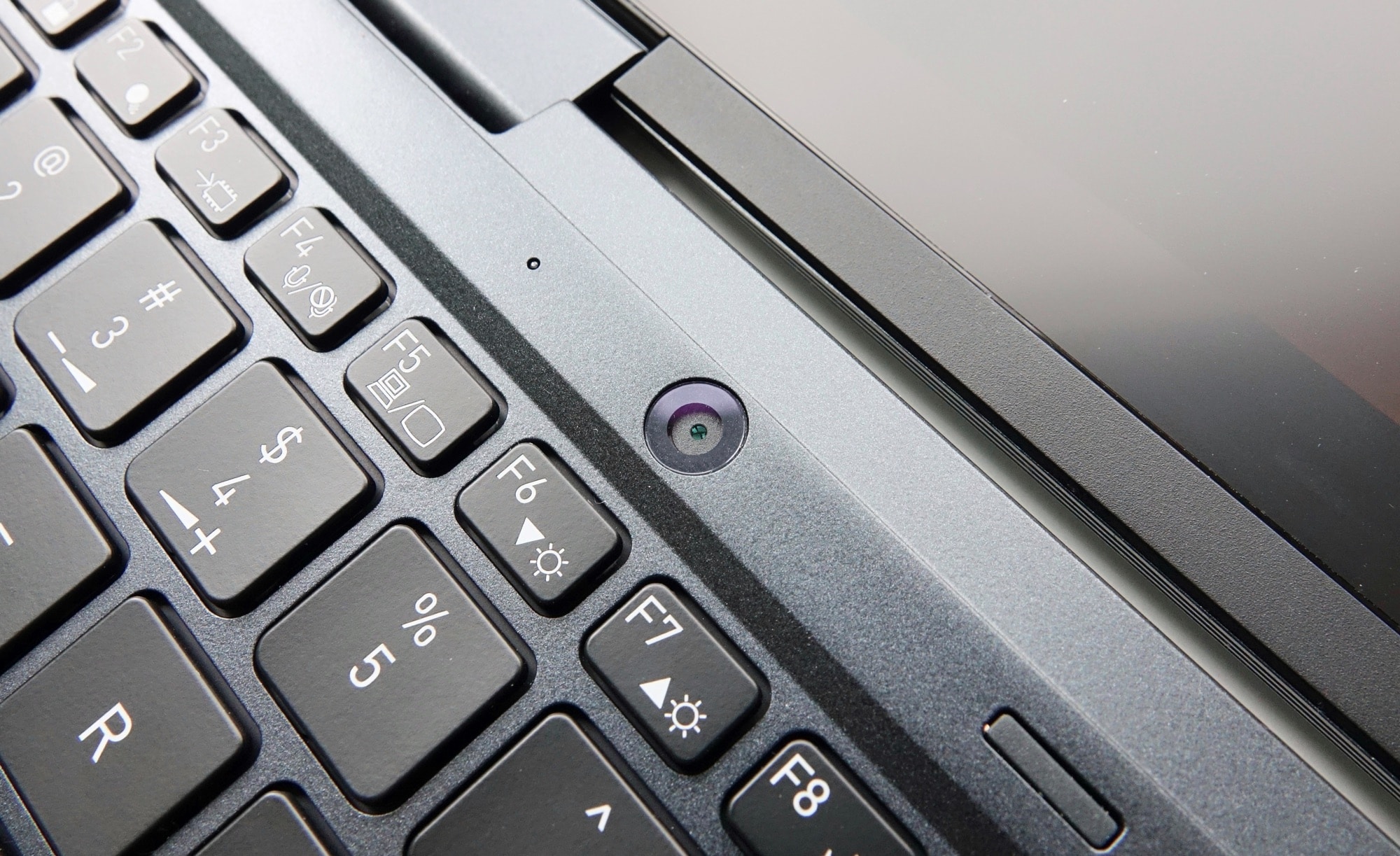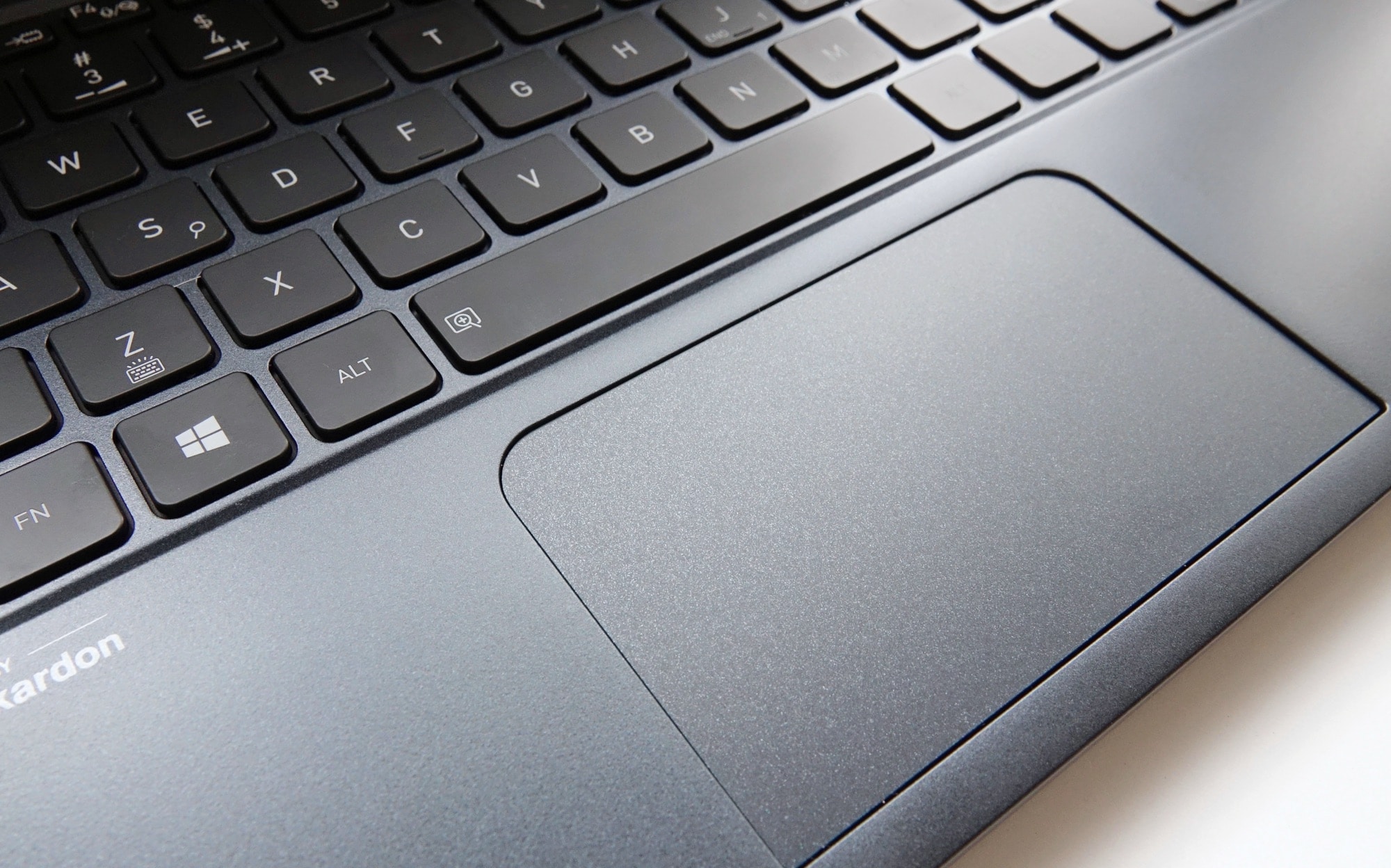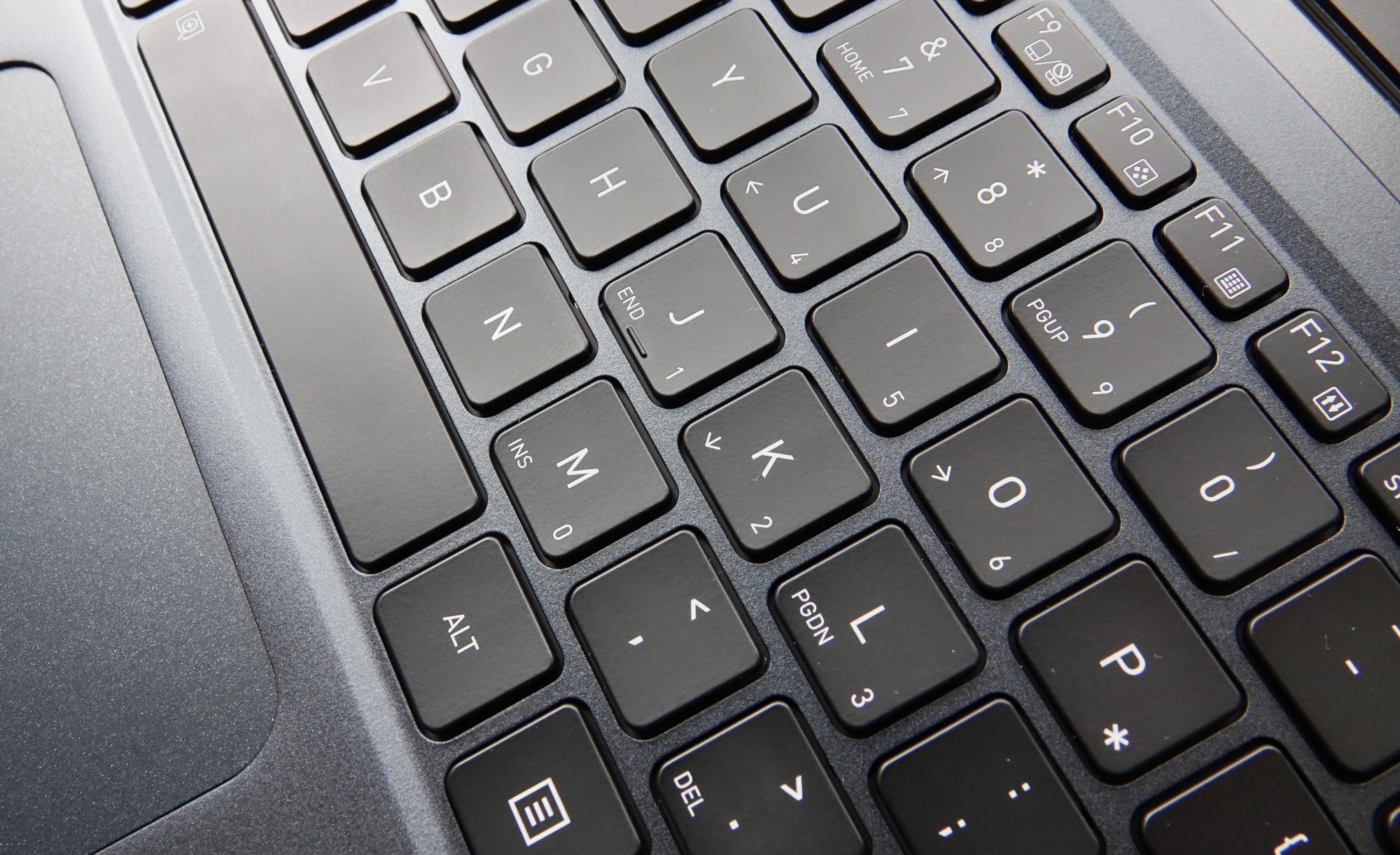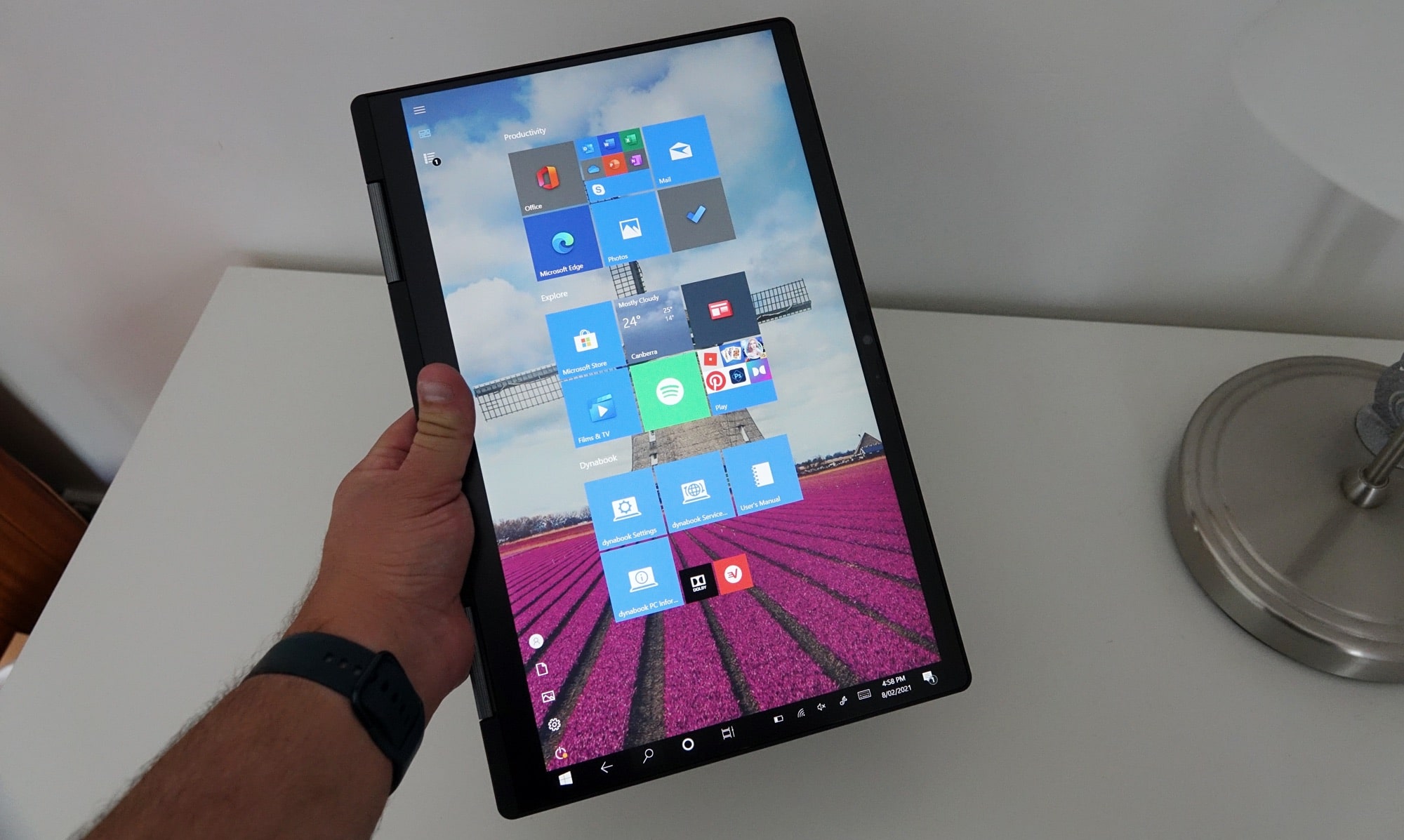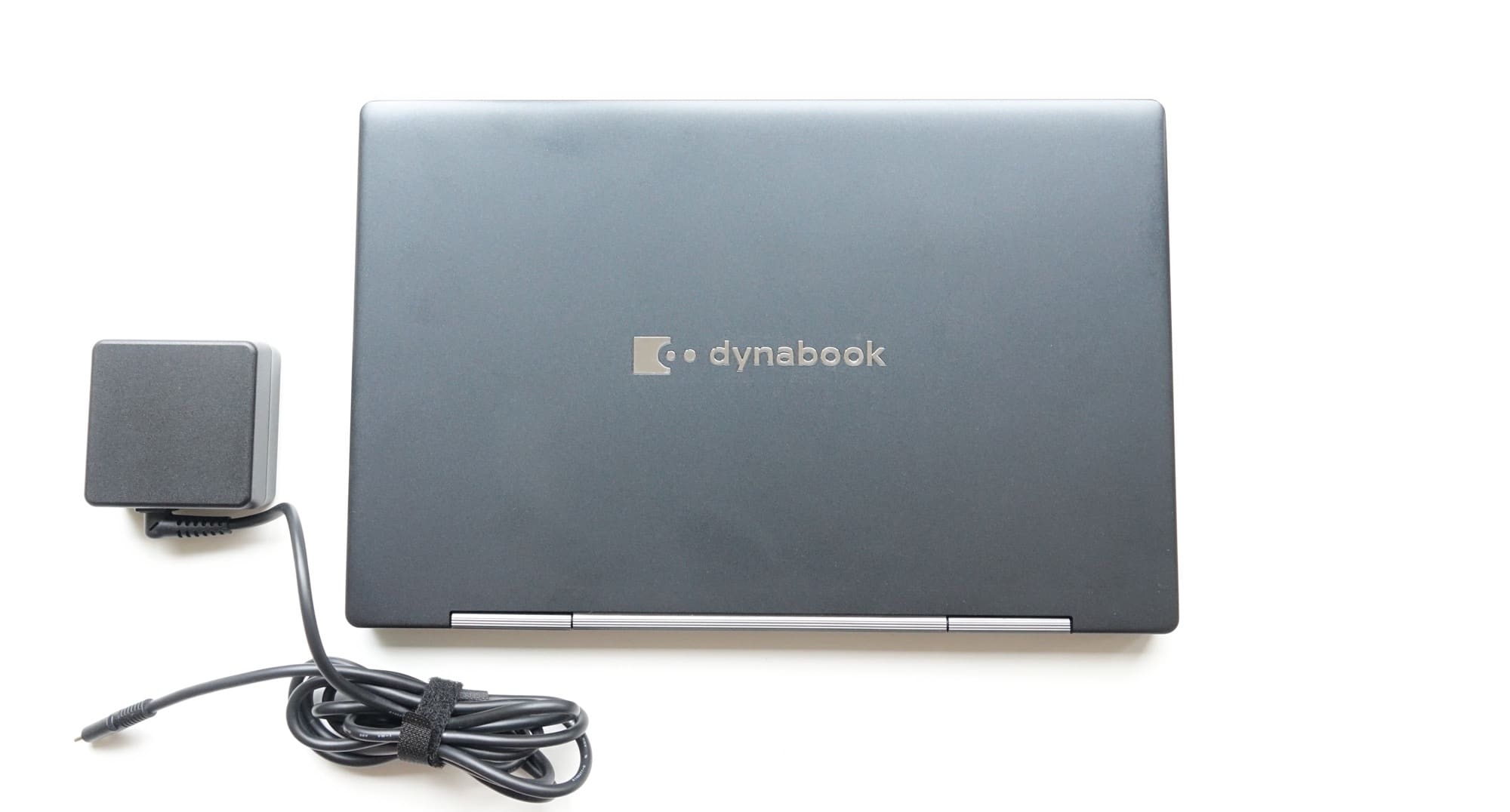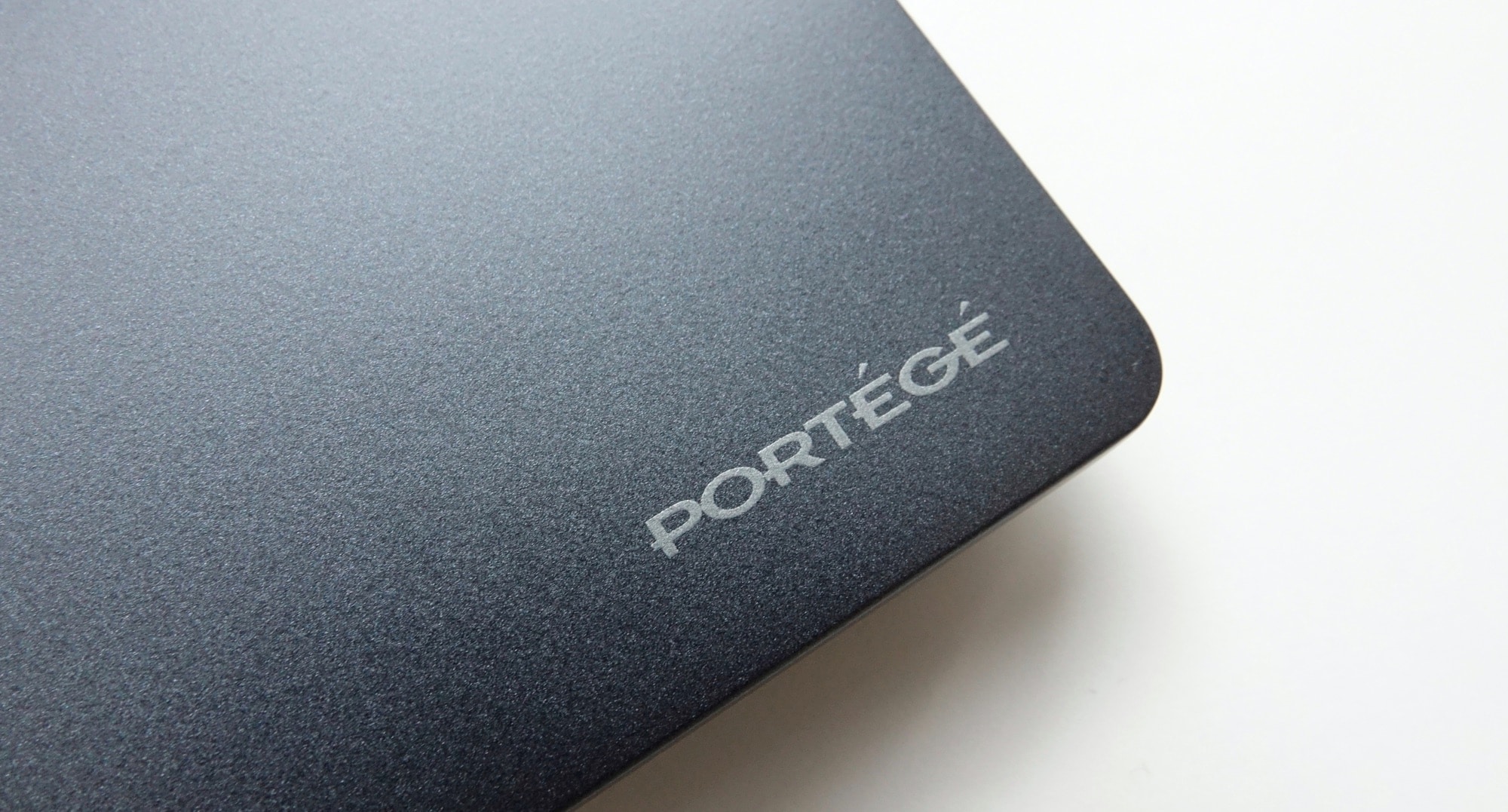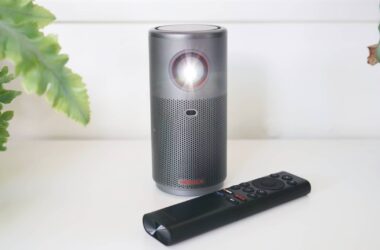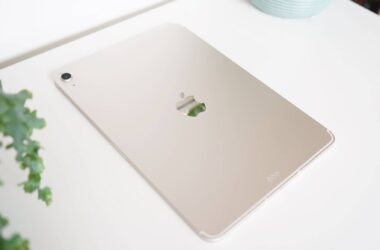Quick review
The good
The not-so-good
Toshiba is back. Kinda. Sorta. Not really. Well, Toshiba’s range is back with a new name, as Dynabook tries its hand at a new laptop line in Australia. Are these business-focused machines worth considering?
There are definite leaders in the laptop space, and some brands have been around forever, but the company that started it all is not. Toshiba doesn’t make laptops anymore, and while it long had a place in Australian technology retail, it disappeared in the past years. Since then, companies like Lenovo, Dell, and HP have stepped up to fill the void, as well as Microsoft, with all four competing hard against Apple as Toshiba once did.
Toshiba still doesn’t make laptops, but much like how IBM sold its ThinkPad brand to Lenovo, it has passed the baton to Dynabook, which is practically reviving the Portege and Satellite brands with gusto, and which both arrived on our shores at the end of last year.
Australians can now find computers not far from what Toshiba built back in stores, but updated to the specs and needs of today, the first of which is a 360 degree hybrid tablet laptop built in the “Portege” name, a computer going as far back as 1993.
Almost thirty years later, the new Portege is here from Dynabook, and it’s a little bit different, but still focused on the ultra-light business user the original had in mind. Is it just as built for business now as it was back then, or should you consider something else?
Design
Toshiba was never exactly a bastion of great computer design, even though it practically invented the laptop computer, and Dynabook’s take over of Tosh’s line of computers doesn’t change any of that.
Even though we live in an era where computer makers make a big effort over design — Apple in the sleek aluminium MacBook Air, Dell going for something aluminium with a degree of carbon fibre in the XPS range, and HP trying solid experimentation and involving materials like leather in some approaches or even wood — the Dynabook range is old school laptop looks.
And by old school, we mean black and plastic. It’s a minor change on Toshiba’s staple grey plastic from the Satellite range in the 90s, but not by much. The Portege X30W-J is just a black plastic laptop with nothing special about the design, except for save a positively huge “Dynabook” logo on the lid. No mistaking this computer: it’s definitely a Dynabook.
However as mediocre and ordinary as the laptop design is, it has one thing going for it: weight.
The Portege X30W-J is a seriously light computer, boasting the title of one of the world’s lightest 13 inch machines at 989 grams. That’s under a kilogram for a 13 inch laptop computer, and one that also comes with a bonus feature, supporting the MIL-STD-810G durability certification. Or to put it simply, while the new Dynabook Portege isn’t pretty, it’s pretty light and durable.
Features
Inside this pretty light and durable machine, you’ll find an Intel chip from the 11th gen Core processors, a minimum of 8GB RAM, a minimum of 256GB solid-state storage, and an assortment of connections.
The latter of these — the connections — may be one of the crowning achievements of the Dynabook Portege X30W-J, with two USB C-based Thunderbolt 4 ports, one HDMI, one 3.5mm headset jack, and one standard USB Type A port, not to mention a microSD slot. That’s the sort of assortment you might be used to seeing on a 15 inch, and hardly a 13 inch, giving Dynabook a bit of an edge for its machines, and something you don’t necessarily see every day.
That runs alongside WiFi and Bluetooth, of course, and there’s a Windows Hello-based facial security camera above the 13.3 inch screen, plus something that’s a bit of a surprise: an 8 megapixel camera above the keyboard.
Essentially, it’s a rear camera, ideal if you ever flip the keyboard section around to the back. For the most part, if you don’t that 8 megapixel camera will just switch on to reveal an 8 megapixel picture of your ceiling, and largely feels like a waste, but it’s there if you did want to flex the 360 degree hinge’s muscle and turn this business-grade laptop into a business-grade tablet, too.
Display
Helping it do that is the screen, which is clearly the part that can make it a tablet in the first place. And that 13.3 inch screen is probably one of the first things you’ll see on the Portege X30W-J, and in fairness, is also one of the nicest features of the whole machine.
For starters it’s clear, bright, supports a Full HD 1920×1080 resolution, and is protected by a layer of Corning’s Gorilla Glass, which is a nice touch from a durability standpoint. But our favourite feature on the 13.3 inch touchscreen might actually be the treatment Dynabook has made to the screen, because for the first time in ages, we’re seeing a matte screen.
Specifically, Dynabook calls it “anti-glare”, but you can call it that or matte. It’s not shiny and offers no reflections of any kind, making it ideal for working really anywhere. It’s a feature we’re not used to seeing in modern laptops, and means you can work in places of great light exposure and not have to worry so much that the reflections are going to drown out your ability to get the job done.
The fact that there’s a 360 degree hinge to turn the Portege X30W-J into a large tablet also helps. Overall, the screen on this Dynabook is easily one of the best things about the laptop.
In-use
Which is good, because we’re not sure we can say the same thing about the keyboard and mouse, which can feel chip. Granted, getting a laptop down in size often means collapsing the amount of travel for both ways of using the computer, but that’s not the main issue we’re taking aim at. Rather, the travel’s fine, but it’s the feel of the keys being particularly too springy and rather plastic.
Typing on the Portege keyboard, we found the keys weren’t necessarily as firm as we’d like, and the whole thing felt a little under where we thought it should be, as if the build of the keyboard didn’t quite match up to the military spec build of the machine, something Dynabook proudly touts.
You can hear it better on a firm surface, something like the wood of a desk, though typing on your lap — the place for a “laptop” actually didn’t feel as good.
The mouse is much the same, as we found ourselves wishing the click wasn’t as decidedly plastic as it was. Maybe we’ve been spoiled by the glass trackpads of laptops in the past, because this one felt a little underpriced compared to others we’ve played with previously.
Also a little strange is the function key layout in the Dynabook, with F keys scattered all over the keyboard. While there’s no touchbar here like on the MacBook Pro, and your function keys are a little more direct, they’re also all over other keyboard characters, with that “Fn” function key working in over time.
It’s over almost every number on the top tow, with the numbers five and six the only ones spared from a double use, as Dynabook struggles to pack in a bigger keyboard into a smaller design, and can make the thing feel a little weird. If you miss a proper directional set of keys, you get a small cramped one in the bottom right and you get one that’s spread in the number eight, plus the letters “U”, “O”, “K”, as if Dynabook was asking a question, and didn’t wait to find if you were comfortable with the answer.
Despite this weirdly compact way of integrating a bigger keyboard into the design, it’s easy to get used to the keyboard, though we did find ourselves watching our right hand as we typed, concerned any extra use of the right shift key was going to flag a page up or down, given both keys were shrunk to flank alongside that.
All up, it’s not the best keyboard in the world, but it’s one you can adapt to.
Performance
When you’re done adapting to the keyboard, you’ll find the performance is actually fairly strong, thank in part to Dynabook’s insistence on using an 11th generation Intel chip.
We found the Core i5 variation of Intel’s processors, with the combination delivering fairly solid performance and little to no lag or slowdowns as we used the computer, which was responsive and easy to get used to.
Battery
The battery life is a little bit hit and miss with the Dynabook Portege, however. Through our review experience, we found the system reporting anywhere between six hours and 18 hours, but the latter was never reached.
Rather, the thin and light 13 inch computer seemed to achieve closer to 6 or 7 as we used it, which isn’t amazing for a machine of this size, but acceptable. It is a thin and light laptop, for sure, and that weight is something to be desired, but we couldn’t hit over 10 falling shy of the 16 suggested by the company.
Frankly, we’d happily take a few more grams if we could get the battery doing just that little bit more.
Value
And that makes the $2099 price a little hard to swallow, with that price getting you a thin and light computer touting 256GB storage and 8GB RAM, which isn’t bad, but also doesn’t fell remarkably competitive for a brand that’s basically coming out of nowhere.
Comparatively, the design and feature set makes the Dynabook 13 inch hybrid tablet laptop compelling, especially against the equivalent from the likes of Dell, though may not read as interesting as others. You’re basically paying for durable machine made to be light and built for business.
And yet Dynabook is also a relatively unknown brand, so while the spec is up there, the comparison is just that little bit harder because this is not Toshiba, even if it feels a whole lot like Toshiba. We almost want the value to be a little better, and to acknowledge that it needs to be, given it’s come from out of the cold, and for many people, out of the blue, too.
What needs work?
And that general feeling is something that permeates throughout the Dynabook Portege. Overall, it just feels like it could be “a little better”, because that’s what needs work: to compete, it should be a little better than what it is.
Take the keyboard, which feels cheaper than it should, especially for the price. It’s not an offensive thing to type on, but it hardly felt as strong as the Dell, Lenovo, or Apple keyboards we’ve fallen in love with over the years. We didn’t love our time with the trackpad at all, which almost felt a little like stuck plastic. You can get used to both, and we did, but for a machine built for business, the keyboard didn’t feel as firm as the plastic on metal approach Apple takes, or even the mag lev in the Dell’s range. It’s an okay keyboard, but the plastic-heavy approach leave you feeling that it could be a little better.
That feeling of plastic extends from a plasticky laptop, which offers a delightful weight, though a build which can feel cheap. It’s weird, because the durability is military spec durable, while the whole can feel a little inexpensive, especially in comparison to the price.
And while the system spec of our Core i5 8GB RAM Portege X30W-J was fine, for the most part, it’s not what we’d call an instant on experience. The MacBook Air we reviewed last year awoke immediately, and the Dell XPS 13 not far behind. In contrast, the Portege X30W-J had you wait a little bit longer after it would inevitably put itself to sleep a few hours after not using the machine.
Waiting an extra few seconds isn’t a big deal, mind you, and it’s not like you need to go get yourself a coffee while you wait for the system to do its thing. But for a computer that costs over $2K for a business-minded machine, we’re left thinking that Dynabook should be performing a little better overall.
Final thoughts (TLDR)
We’re delighted to see Toshiba’s laptops return to Australia, even if they are in the new brand of Dynabook, and we suspect business users who recall the brand with firm familiarity would be, as well. It’s nice to see a little more competition from one of the lines of computers that practically made laptops what they are.
That said, it also doesn’t entirely feel like a Toshiba in that the company would have developed, and feels more like a Toshiba that has suddenly unfrozen itself and restored its laptops to sale simply because they could. This is a Portege that feels like it would be a Portege a few years ago, but not a Portege now.
The Portege line means business, and this is no different, but it’s a different feeling of business. It’s a business laptop where weight is the overarching theme above all, over battery life or a feeling of quality.
Yes, it’s made to be durable, but over some aspects of usability, begging the question: do you want something light and durable, or something that feels premium and more usable?
The Dynabook Portege X30W-J fits in into the former category, compared to competitors that sit in the latter, and while there’s nothing wrong with either — both are important — we might be looking for a little more at this price point, and wishing the needle swayed more from one side to the other.
To that end, the Dynabook Portege X30W-J isn’t a bad computer by any stretch of the imagination. This is a perfect nice machine made for business. It’s certainly the lightest laptop for business we’ve seen. But it’s one that could also be just a little better, and might just make a better machine in the next gen if it has a little more premium going for it, too.
Worth a look if notebook weight always gets you down, and if you’re worried about your machine taking a fall, for sure.
